Had tennis at 9am this morning it seems I am almost playing every day…..I just want to make some comments about my tennis…all those years of playing on the clay courts in San Miguel gave me some skills in spin and drop shots and I notice that now I am playing on hard courts most of the opponents are not used to seeing those kinds of shots so it gives me a little bit of an edge which I try to take advantage of…the tennis this morning was a good workout and afterwards I had a few chores to do one of which was going here
and then the library and the grocery store and was home by 1 o clock in time for a lunch and then I took Boomer down to the beach he loves it down there and he is good off the leash!!!
Just a quiet time at home tonight catching up on e mails and working on some trip planning…..
Some computer tips!!!
Sad article below!!!
Calgary Stampede: Why horses die on the 'half-mile of hell'
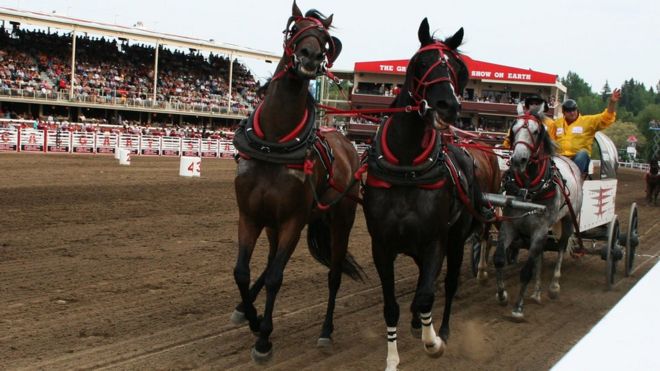
A fourth horse has died during races at the annual Calgary Stampede. While officials have implemented changes to make the race safer, animal rights activists argue the popular horse and wagon sprint is still cruel and dangerous.
A 10-year-old thoroughbred horse named Duke was competing in a chuckwagon race in this year's Calgary Stampede when he collided with another team and broke his leg.
Shortly after, Duke was removed from the track and euthanised.
Two days later on the same track, nine-year-old Schuster's Way was caught between two wagons and suffered the same fate. Over the weekend, two horses - aged 13 and 16 - sustained leg injuries and were put down.
A total of 65 horses have died at the Calgary Stampede chuckwagon races since 1986, an event the World Professional Chuckwagon Association calls "a half-mile of hell".
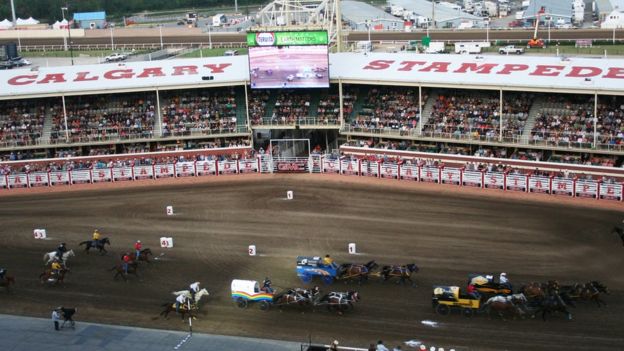 The Calgary Stampede is one of the city's biggest events
The Calgary Stampede is one of the city's biggest events
Teams of four horses pull covered wagons in figure-eight formations around barrels, then race down an oval track, followed by outriders who assist the wagon driver at the start of the race.
In 2011, the event's safety commission implemented new measures after six horses were killed the year before. The number of outriders was reduced, microchips were added to all horses in order to track their racing record and health, and a team of veterinarians was put on standby at the races.
But opponents of the event say the entertainment value of the races isn't worth the inevitable accidents on the track.
The chuckwagon races have been a part of the Calgary Stampede since 1923.
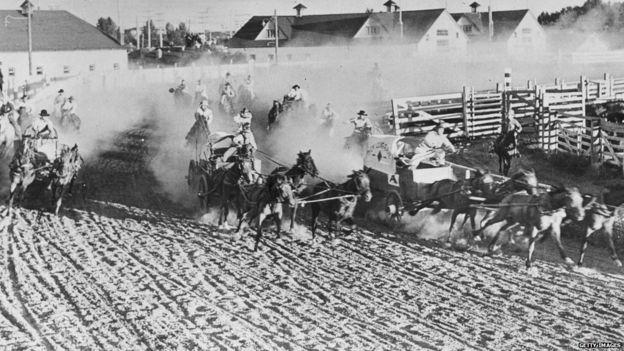 A chuckwagon race in 1938
A chuckwagon race in 1938
Around that time, cattle ranchers would bring covered cook wagons - or chuckwagons - to town to feed the crowds at pancake breakfasts. The wagon drivers often raced back to the barn and soon after a formal race spread to rodeo events across western Canada.
Originally, a winner was declared after the first chuckwagon built a fire in his stove at the finish line, but that ended when participants started using gasoline.
Instead of making camp, teams now break camp, with outriders throwing a "stove" into the back of the chuckwagon before the driver takes off.
"Chuckwagon racing was quite a bit more exciting in the '50s and '60s," said Stan Church, the Chuckwagon Safety Commissioner of the Stampede.
"A lot of people were disappointed if at least one wagon didn't roll over. So over the years, it's been a progression. It's much safer now - much safer for the drivers too."
The commissioner admits horse fatalities are a cost of the races. Since the additional safety standards were set in 2011, 11 horses have died.

"As long as you're going to have horses running, whether it be on a racetrack or the chuckwagons, there's going to be some fatalities," said Church.
"Just like if you own horses, they're running out in the field, horses will step in a hole and break their own leg."
"Humans are involved [in the races] so we can't make it accident free. It's our job to make sure we do it the safest way possible."
Church says the majority of deaths are a result of health breakdowns, which the new safety standards address, and says the two driver-error incidents this week were an anomaly.
"It's a tragedy to lose any of our animals," driver BJ Carey told the media after the crash that ended in the death of Schuster's Way.
"We look after these horses like they're our children. They eat before us every day, they get pampered, we look after them like nothing else."
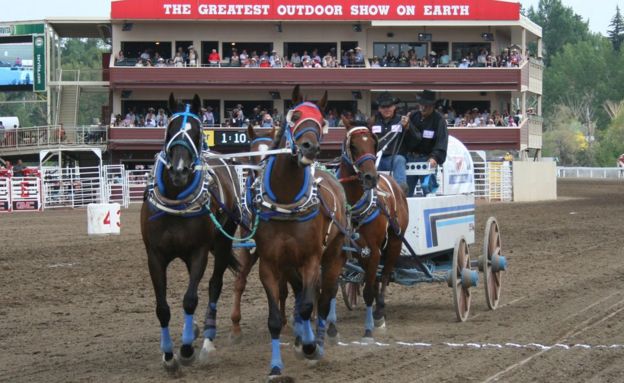
Even so, animal rights advocates have long argued against the chuckwagon races and other rodeo events.
"The Calgary Humane Society opposes the use of animals for any form of entertainment in which they are placed at risk of suffering undue stress, pain, injury or death," said Sage Pullen McIntosh, spokeswoman for the Calgary Humane Society.
Church argues fewer horses die as a result of the chuckwagon races than in thoroughbred racing.
A 2012 New York Times investigation found about three horses die every day on US race tracks, but the number of horses in chuckwagon races is far smaller than those in thoroughbred racing.
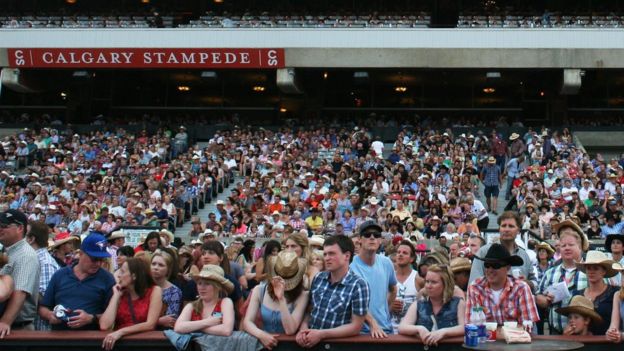
And the majority of chuckwagon horses are retired thoroughbred racers.
"It's a sport that provides another use for these thoroughbred horses after they're finished with their career on the racetrack." Church says.
"Race horses are born and bred to run, so if you didn't race them, you wouldn't raise them, they wouldn't exist,"
Kathy Guillermo, senior vice president of People for the Ethical Treatment of Animals (Peta) argues a second career isn't beneficial for horses.
"Thoroughbreds do love to run, but they don't necessarily love to race," said Guillermo.

"I don't know how anyone knows what a horse's dream is, but I can imagine that collapsing in a heap of tangled and broken bodies would not be it."
Taking a horse from one risky sport to another "and then excuse it by saying it's better than death, I think that's reprehensible," Guillermo says.
And there's pressure from across the Atlantic as well.
In 2010, more than 50 members of the UK Parliament signed a motion calling "on the Canadian government to take steps to end the immense cruelty to animals" at rodeos including the Calgary Stampede.
And when the Duke and Duchess of Cambridge visited Calgary in 2011, Peta urged them to not attend the Stampede.
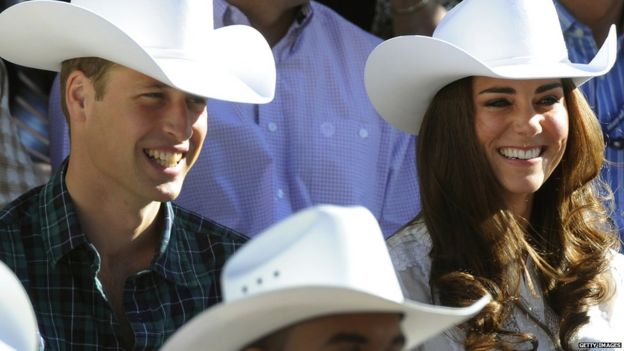 The Duke and Duchess of Cambridge attended the Stampede during the 2011 tour of Canada
The Duke and Duchess of Cambridge attended the Stampede during the 2011 tour of Canada
Guillermo says if people stay away from the events, it would send a message to the Calgary Stampede.
"There are limits to what people - even people who love rodeos - are willing to tolerate. And there's not really any excuse for risking a horse's life in this way
Yashi Kochi!!!








No comments:
Post a Comment